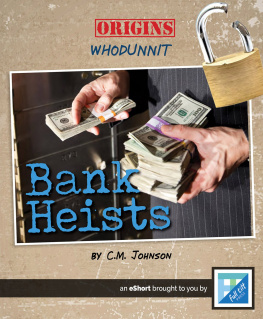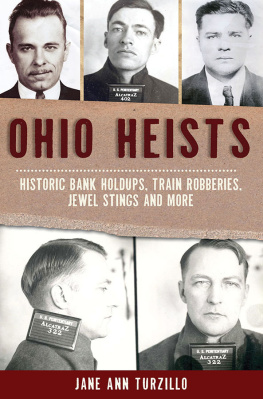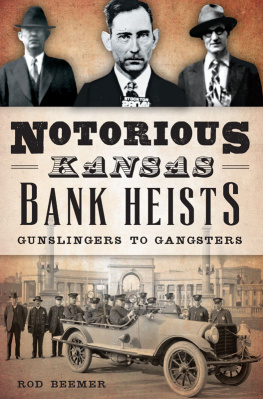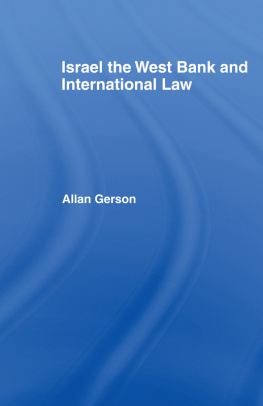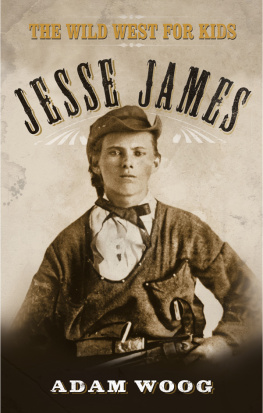To Mouse: Whose patient suffering and assistance in my lack of computer skills was worth as much to me as her incredible research skills.
To refer to Montreal's West End hoodlums as either a gang or as the city's Irish mafia is somewhat of a misnomer, since, even if there are several familial ties, few of the subjects you'll read about here are bound to one another by a down-from-the-top hierarchy, or by any code of omert .
Nevertheless, all of these characters do have one thing in common. They are a collection of petty thieves, bank and armored-truck robbers, shakedown artists, safecrackers, truck-hijackers, drug importers and distributors, money launderers, fences, loan sharks, protection racketeers, enforcers, hired killers and other assorted thugs who operate mostly in the downtown and southwestern part of the island of Montreal. And, for the most part, they are of Irish descent and are English-speaking in a city that is today 70 percent francophone.
When these Irish gangsters first began their criminal activities in the mid-1950s, they were nicknamed by the French media as Le Gang de l'Ouest . And the name, along with its English translation, has since stuck in newspaper, radio and TV accounts, police reports, crime commission hearings, etc. So, whether the appellation is accurate or not, Montreal does indeed have a West End Gang, albeit consisting of a somewhat loosely knit and rather disorganized bunch of fraternal families and individuals. Their exploits, as well as their shady business relationships with the city's French, Italian, Jewish, and biker-gang fellow mobsters, is a story that has never before been fully explored.
The West End Gang's heyday was from the 1970s through the early 2000s. Nevertheless, their roots precede that, and their criminal activity is, if to a much lesser extent, ongoing today.
My introduction to some of these characters began quite serendipitously in 1979 when I moved to Montreal from New York where, as a reporter for the Wall Street Journal, I had written a feature article about Montreal being, during the late 1960s, The bank robbery capital of North America. One of the first jobs I got on my return to Montreal was as an administrator and teacher in a Dawson College program at the federal Leclerc medium-security penitentiary in Laval, just north of Montreal. And because the program involved Leclerc's English-speaking inmates, I was soon meeting some of the so-called West End Gangguys I'd never heard of before. I found some of them and their stories fascinating.
Now, three decades later, I am still intrigued by their exploits, their screw-ups, and the fact that those Irish mobsters (many of them long-since killed, and others now rather long in the tooth) can still generate headlines.
In recent years, there has been much written about Montreal's Italian mafia families, biker gangs and young ethnic street gangs. Yet relatively little attention has been paid to these Sons of Erin who for several decades brought crime and mayhem into the southwest corner of the city. This book is about these men and their exploits.
This book owes much to my ability to access the files and source-support of the RCMP (especially their Quebec Division C), the Montreal Police Service, and the Sret du Qubec (Quebec Provincial Police). It also relies heavily on access to and documents obtained from the Palais de justice de Montral (the Courthouse), Cour du Qubec (the Court of Quebec), Cour d'appel du Qubec (Quebec Court of Appeal), Cour Suprieure du Qubec (Quebec Superior Court), Bibliothque et Archives nationales du Qubec, the Canadian National Parole Board, the McGill University Law Library, and the Concordia University Library. Many individuals in those organizations were helpful in providing information, as well as guiding me through the labyrinth of voluminous files that had anything to do with the West End Gang.
More importantly, there are the cons and ex-cons, cops and ex-cops, various Irish gang hang-arounds and know-abouts, bar owners, bar tenders and barflies, hookers, pimps and drug-dealers, plus others who allowed me to interview them (either on or off the record), and helped me get a handle on the fascinating history of Montreal's so-called Irish mafia.
But the most helpful of all were my chief researcher, Miranda O'Connor, as well as John Westlake, Andr Savard, John Phillips, Andr Potvin, William Morgan, Andr Bouchard and Paul Cherry, without whom I'd still be lost trying to figure out all the various connections between the bad guys and those who pursued them. There were also many others who granted me interviews in my quest for details about growing up in Irish neighborhoods, as well as the machinations of the West End Gang.
Finally, there are the various munchkins, especially Julie Lewis, who did most of the tedious work of translating from French to English the hundreds of court documents, police files, crime commission and coroner reports, National Parole Board hearings, and francophone media articles. And it was mostly Miranda who transcribed dozens of audio-taped interviews onto paper. Any factual errors that may appear in the book are entirely my responsibility, and not theirs.



